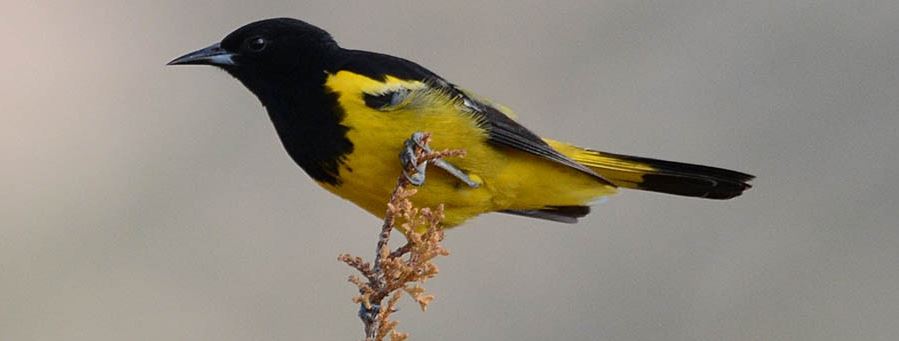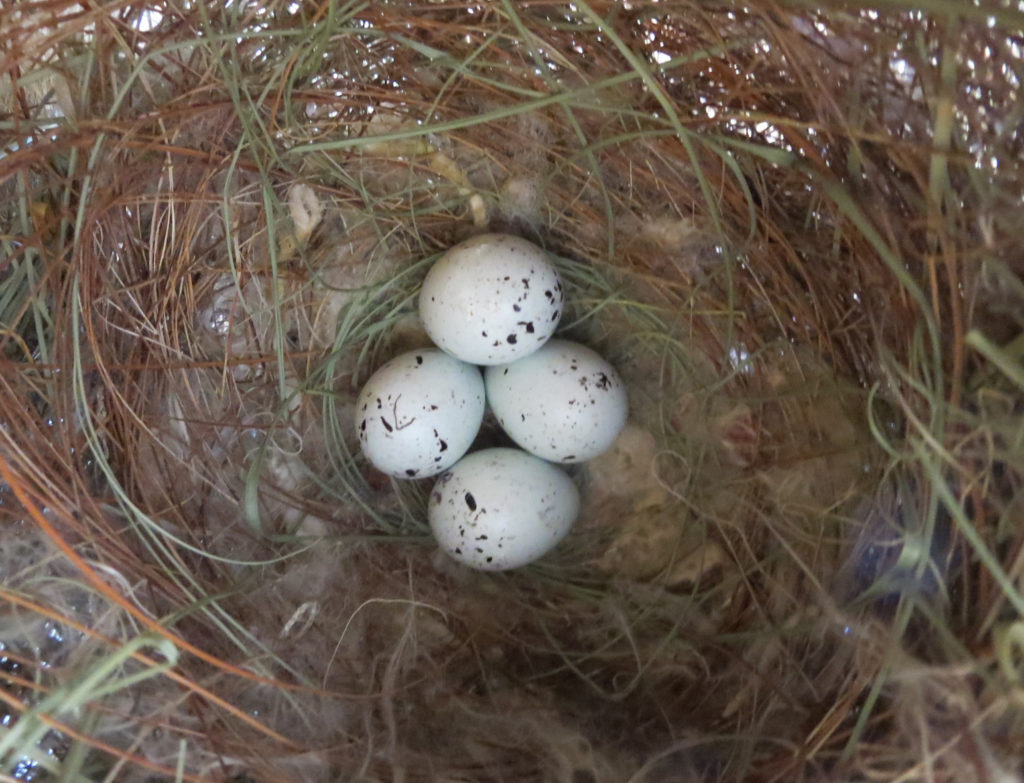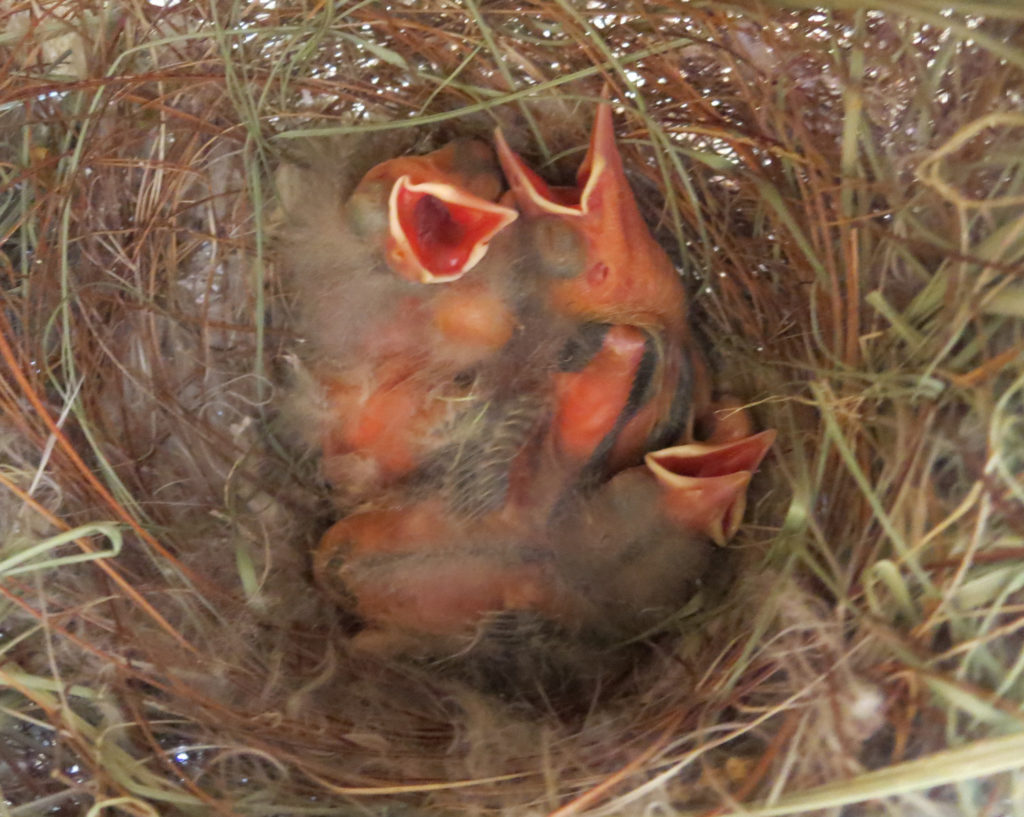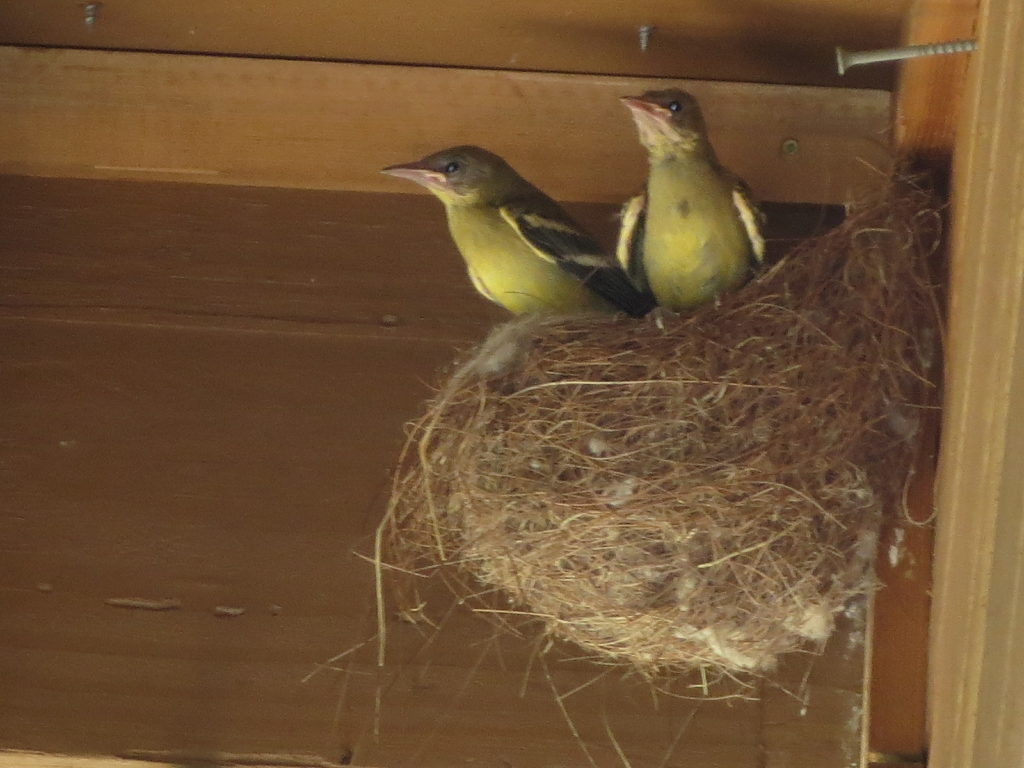 Photo ©
Troy Hibbitts/Macaulay Library
Photo ©
Troy Hibbitts/Macaulay Library
By Robyn Bailey, NestWatch Project Leader
In west Texas, NestWatcher Joanna Roberts has been monitoring nests for the past eleven years. Jo, as she is known, checks her 40 nest boxes every weekend from March through June, and has accumulated around 250 nest records over the years. In that regard, she is like many other NestWatchers with nest boxes. But Jo also reports any nest she finds around her home, and it is this area of her monitoring that caught my eye. In July 2021, it came to my attention that Jo is the only person to have ever reported the nest of a Scott’s Oriole in the 14-year digital history of NestWatch. We do have a few dozen records in our historic North American Nest Record Card Project files, but these are still in the process of being digitized.

Hanging By A Thread
Scott's Orioles lay 1–5 eggs in a nest made of yucca leaf fibers. The nests are almost always suspended from the top rim.
Scott’s Oriole is a lemon-yellow oriole which breeds in the southwestern United States (from Texas to California) and throughout northern and central Mexico. It is uncommon enough to evade the close attention of birdwatchers, but a few researchers have studied its breeding habits. The orioles typically nest in desert or semi-desert vegetation, often in yucca trees. It’s very uncommon for them to nest on an occupied home. In 2016, a pair of Scott’s Orioles built a nest on a nail under the eave of Jo’s cabin while her new home was being built. Beginning in 2017, the same or a different pair began nesting on the eave of the new house, a feat accomplished by threading some grass into a splinter in the wood trim.

Making History
These young Scott's Orioles don't know they're making history by being raised in the only known nest to have been reused from previous years.
Reuse and Reduce
What is even more peculiar is that the birds have been using the same nest for four consecutive years, an undocumented behavior of a species that typically makes a new nest every year. At the end of the 2017 nesting season, Jo took down the old nest thinking that the birds would not reuse it. Jo was not alone in thinking the nest had served its purpose. Birds of the World tells us there are, “No instances of [Scott’s Orioles] using a nest from a previous season.” Indeed, studies suggested that they would only infrequently reuse a nest during the same breeding season. Not only have they been using the same nest affixed to the same splinter of wood since 2018 (when it was rebuilt in the exact same location), the orioles routinely nest 2–3 times per year in it. As of July 2021, the same nest has received eleven attempts in four years—most of them successful.
While there are certainly examples of Scott’s Orioles rebuilding nests very close to old nests, the pair Jo monitors appears to be maximizing their efficiency by reusing the same nest year after year. Perhaps this is possible because the nest is shaded and not as exposed to the elements. It’s also possible that the birds prefer this site because the human habitation affords them some protection from predators that routinely search vegetation for birds’ nests. Whatever the reason, this is the only example of which I am aware of this species reusing a nest for four years.

Suspended By A Splinter
This nest is suspended on a splinter of wood on a piece of trim joining the wall and roof, 15 feet above Jo Roberts' porch.
Only Doesn’t Mean Lonely
Behaviors rarely expressed by birds can take longer to document because more total hours of observation are required to witness the unusual behavior. Birds can also change their behavior over time. Citizen science is a great way to accumulate enough observations to notice something new. Jo’s records remind us that just one person can uncover something never before seen. Jo told NestWatch, “I’m glad that my observations are contributing to a better understanding of our fine, feathered friends.” We know that there are others out there who are also the only one reporting certain species. While that can feel lonely and may be perceived as less valued, I would argue that just the opposite is true. If you’re in this small club, chances are good that you’re documenting something that we know very little about.
That is amazing! As the author of the Birds of the World Account for Scott’s Oriole, I am certainly surprised–and delighted that you have shared this, since I am in the process of updating the account.
Hi Nancy, please shoot NestWatch an email, and we would be happy to share further details and photos with you. We love Birds of the World, and may have some additional insights you would find interesting! Thanks so much, Robyn
Jo, you are very lucky to have such a beautiful bird at your home!
I wonder if migrating birds do not often go back to the exact same location they used the year before. It seems like it from a few anecdotal experiences 1) Rufous Hummingbird showing up on or within a day of its annual migration north at the same bottlebrush tree 2) Phoebes returning to the same nest (ok, we can’t say they are the same for sure!)
I have a Robin’s nest that is 5 years old protected similar to above Oreiles nest and it has been used 3 different summers.